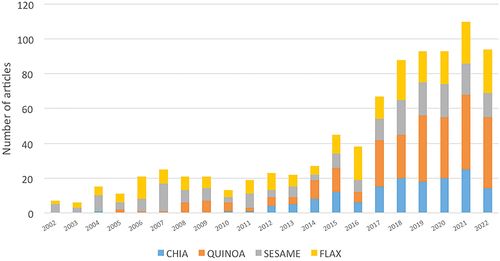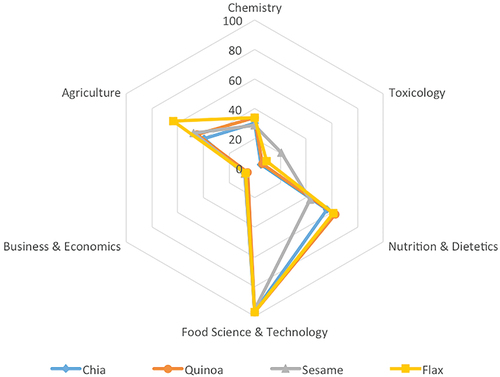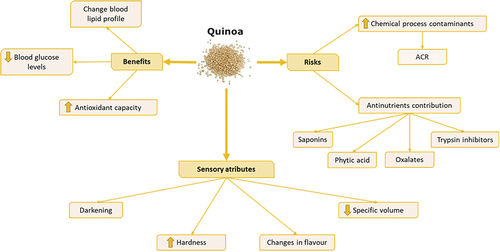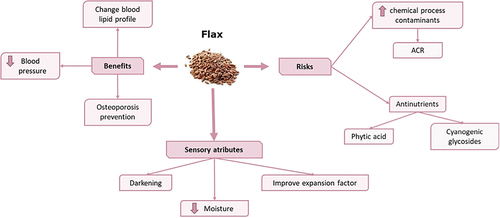Figures & data
Figure 1. Number of articles published in the last 20 years (2002–2022) containing the words “chia/quinoa/sesame/flax” and “bakery products”. Source = Web of Science Core Collection (WOS).

Figure 2. Percentage of scientific reports on chia, quinoa, sesame and flax seeds over the last 20 years (2002–2022) distributed in research areas (chemistry, toxicology, nutrition & dietetics, food science & technology, business & economics, and agriculture with the keywords “chia/quinoa/sesame/flax” and “bakery products”. Source = Web of Science Core Collection (WOS).

Table 1. Nutritional composition of chia, quinoa, sesame and flax seeds compared with wheat. Data are expressed per 100 g of sample.
Figure 3. Risk/Benefit associated with the consumption of chia seeds and sensory attributes of cereal-based foods formulated with these seeds.

Figure 4. Risk/Benefit associated with the consumption of quinoa and sensory attributes of cereal-based foods formulated with this pseudocereal.



